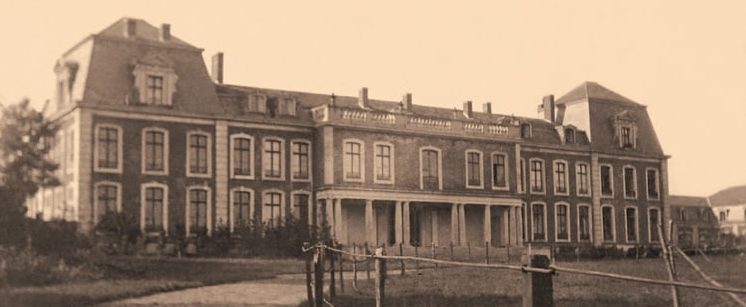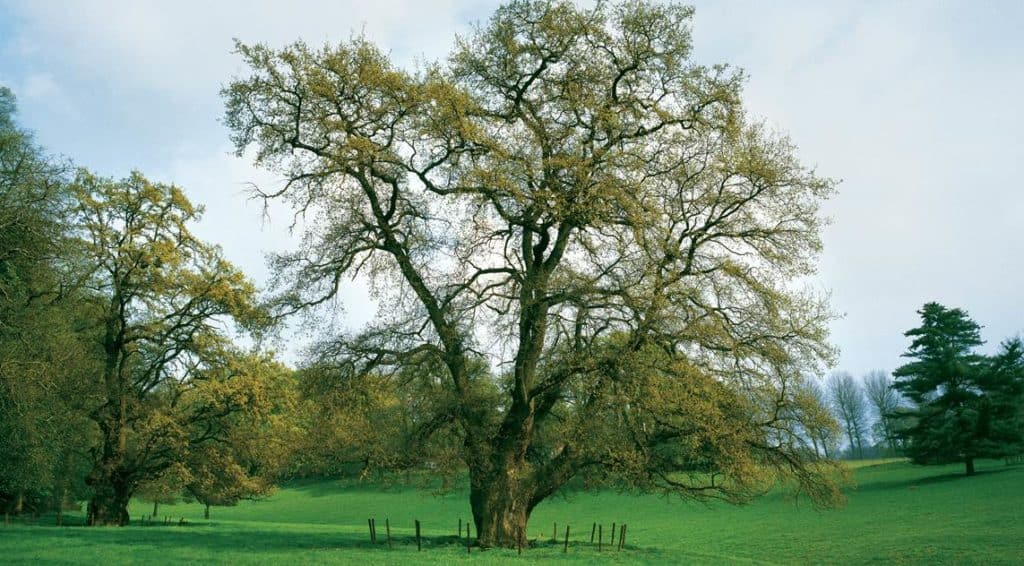Our History
Limburgs Haspengouw has a landscape with gently rolling hills, green meadows, fertile fields, orchards and tufts of forest. The Liege Prince Bishop Karel van Velbrück chose this spacious landscape to create an earthly paradise, an 'Arcadia' according to the taste and philosophy of the 18th century. The hill that extends above the village was equated to a large terrace on which a hunting pavilion was built, where formal or style gardens were laid out. The remaining hills formed a suitable terrain for creating a landscape park.

A princely estate unveiled
The art historian Chris de Maegd was the first to make an in-depth study on the history of Hex, the construction and developments of the park and the gardens - from the origins, through flourishing and turbulent times of the 19th and 20th century, to today's situation. . The story of her search for the history of the estate was published in book form in 2007, with beautiful original prints and photographs illustrated and reads like a novel.
FROM VELBRUCK TO D'URSEL
Castle Hex was built by the prince-bishop of Liège, Franz-Karl von Velbrück, in the years between 1770 and the year of his death in 1784. After his death the estate came to the Marchant d'Ansembourg family by inheritance. When the last d'Ansembourg died childless, the estate was inherited by the d'Ursel family. The current residents are the second and third generation d'Ursel on Hex. Count Ghislain and Countess Stéphanie d'Ursel still manage the estate in the spirit of the builder of yesteryear.
An enlightened princeKarel van Velbrück was born in 1719 at the castle Garath near Düsseldorf. His family belonged to the Westphalian nobility and his parents provided for him an ecclesiastical career. After graduating from law, Velbrück came to Liège as a young canon and quickly held important positions in the administration of the principality. In 1772 he was elected prince-bishop. His policy was that of an enlightened monarch, won for the ideas of freedom and tolerance. In him, arts, literature, science and education were a great promoter.

THE ESTATE
Central to the estate is the castle with its walled gardens and park. To the west of the castle, in the valley of Broekom, is the farm of Manshoven with its rich pastures and meadows and covered in the back by the beautiful Manshoven forest. To the east of the castle, in the middle of the fertile plateau, lies farm Monnikkenhof with its vast fields. A third farm is located on the Hekslaan opposite the castle. Furthermore, on the Hekslaan you will find a number of beautiful old houses in the rural style of the 19th century, such as the nunnery and the old sawmill. Finally, the old water mill, located lower in the village on the banks of the Herk, belongs to the estate.
The walking route
Along Monnikkenhof, water mill and Manshoven.
Click here for the map of the walking route of 6km, 9km or 12km.
Starting point at restaurant and bistro De Horne.
THE CASTLE
According to tradition, the castle was built according to the plans of the Liège architect Etienne Fayen. For the execution Velbrück attracted the best craftsmen from Liège, Lorraine and Italy. The castle itself is a U-shaped construction in red brick with window frames in Namur limestone. There is a floor, covered with a mansard roof. The sober building has as its only decoration a triangular pediment with in relief the hunting goddess Diana.

THE ORNAMENTAL GARDENS
Velbrück had a number of formal ornamental gardens built in the immediate vicinity of his castle during the construction of the castle around 1780. At the front, which was then the southeast side, the entrance from the south, where Liège is located, was decorated in French style with flower beds on both sides of the road. On the other side of the castle came the walled parterregardens and in addition, on the slope opposite the village, the lower-lying utility gardens. Little is known about how the situation evolved during the next generation. In 1871 the garden and landscape architect Louis Fuchs redefined the formal garden on the honorary war. Fuchs was also responsible for the construction of the English landscape park with the large sight axes. The formal garden that was previously laid out in various terraces and decorated with broderies, flat-bandes with flowers, exotic eye-catchers and numerous vases, benches and rose arches was leveled and greatly simplified. In 1913, the Brussels landscape architect Jules Janlet was commissioned by the then Count d'Ansembourg to redraw both the old formal garden, the prince garden, and the front garden. He re-informed the formal garden, taking into account the existing longitudinal and transverse axis. The attention to straight lines, balanced proportions and the use of geometric figures such as the half arch are typical of Janlet's style. The three wide terraces on the southeastern side of the castle also date to him, when they are decorated with bright floral beds, and the geometric layout of the prinsenhof as we know it today. The terraces were redesigned in 1992 to a drawing by the Antwerp garden architect Jaques Wirtz. The flower beds with annuals made way for a suitably tight design of lawns, shaved yew blocks and surfaces of dolomite grit.

THE VEGETABLE GARDEN
The original terraced construction of the gardens of Hex is best preserved in the lower 'potager'. This ancient vegetable garden with orchards is completely walled and, lower than the castle and the formal gardens, lies in parallel levels against the hillside. In 1774 there was a row of village houses next to the Hekslaan, including the presbytery. The houses were demolished and the vicarage was rebuilt on the other side of the street. The works were completed around the year 1790. Since then little has changed in the layout of the kitchen gardens. The high retaining wall on the north-east side is 250 meters long and is still used as a fruit wall. It is at the foot of the wall - the so called rabat, or 'collar' of the garden. The central level is occupied by the beds with vegetables and flowers. The lowest level on the street side is an orchard where the sheep graze. There you will also find the old well that the vegetable garden had to provide with water. In the northwestern part of the garden there are the greenhouses and the nursery. The 18th century vegetable cellar is hidden behind a door in the high wall, in the eastern part of the garden, hidden among the climbing roses.
 THE LOST ENGLISH GARDENS
THE LOST ENGLISH GARDENS
In the years before his death in 1784, prince-bishop Velbrück had a garden complex built outside the walls of the formal gardens into a completely new concept. The so-called English gardens were only in fashion and Velbrück was one of the first to work according to the new principles of these 'natural' or irregular gardens. The concept of his then English court is still far from what we know today as the English romantic garden style, but the style break with French-inspired rococo tradition was significant. The gardens were laid out in a large rectangle, located between the French garden and the Zavelberg, and surrounded by a hedge. Winding roads led the visitor through passages in the forest parts from one garden room to another. The lawn edges were exaggerated and here and there stood solitary trees, low groups of woody plants (forest quests) with flowering plants and park constructions. There is not much left of this English Court. More so, we do not even know to what extent the original plans have been implemented. But the tone was set; the English Court laid a cautious foundation for the large landscaped park as we know it today.

THE LANDSCAPE PARK
In 1871, the German landscape designer Louis Fuchs, who had fled to Brussels, was commissioned by the then lord of the castle Alfred I d'Ansembourg to redesign the park and the surrounding area in the landscape style of the day. In the following ten years, the old pine forests were felled, the relief adapted, new drives planted and large lawns laid out. Today, the elongated Fuchs valley with its slightly undulating character and its selected solitary plants and groups of trees is one of the main attractions of the estate and a textbook example of a landscape park, moreover almost perfectly preserved.



